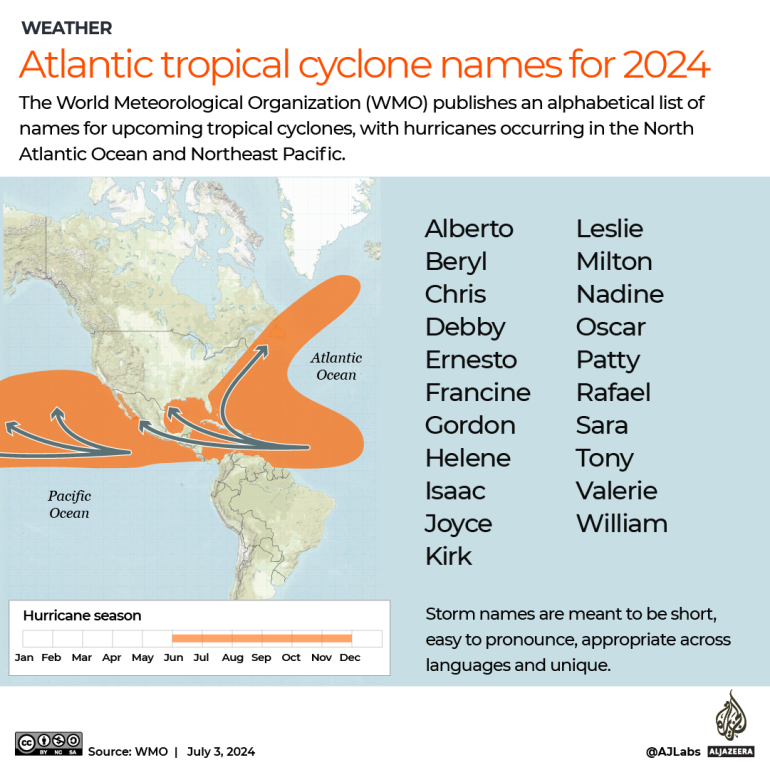EXPLAINER
With this year’s hurricane season under way, Al Jazeera visualises the differences between various storm systems.
Hurricane Beryl, the earliest hurricane on record to reach Category 5 strength in the Atlantic season, is barrelling towards Jamaica after battering the southeastern Caribbean, killing at least six people and leaving widespread destruction.
The National Oceanic and Atmospheric Administration (NOAA) predicts an 85 percent chance that this year’s hurricane season will be more active than usual, driven primarily by La Nina conditions and warmer than average ocean temperatures.
The World Meteorological Organization (WMO) publishes an alphabetical list of names for upcoming tropical cyclones.

What’s the difference between hurricanes, cyclones and typhoons?
Hurricanes, cyclones and typhoons are all essentially the same thing.
All three are storm systems with winds exceeding 119km/h (74mph). The name differs based on where in the world the storm happens.
Hurricanes: Occur in the North Atlantic Ocean and Northeast Pacific, often affecting the United States East Coast and Caribbean. The strength of a hurricane is measured on a wind scale from 1 to 5. A Category 1 hurricane will bring with it sustained winds of 119-153km/h (74-95mph) whereas a Category 5 storm can exceed 252km/h (157mph)
Typhoons: Occur in the northwestern Pacific Ocean, frequently hitting the Philippines and Japan. Typhoon season is most common between May to October, but they can form year-round. The strength of a typhoon has various classification scales with the most severe storms named “super typhoons”.
Cyclones: Occur in the South Pacific and the Indian Ocean, often affecting countries from Australia all the way to Mozambique. Cyclone season is typically between November and April.

How does a tropical storm form?
Tropical storms form over warm ocean waters near the equator. As this warm air rises, an area of lower air pressure is formed. As the air cools down again, it is pushed aside by more warm air rising below it. This cycle causes strong winds and rain.
When this cycle gains momentum and strengthens, it creates a tropical storm. As the storm system rotates ever faster, an eye forms in the centre. The eye of the storm is very calm and clear and has very low air pressure.
When winds reach speeds of 63km/h (39mph) the storm is called a tropical storm. When the wind speeds reach 119km/h (74mph) the storm becomes a tropical cyclone, typhoon or hurricane.

EMEA Tribune is not involved in this news article, it is taken from our partners and or from the News Agencies. Copyright and Credit go to the News Agencies, email news@emeatribune.com Follow our WhatsApp verified Channel





